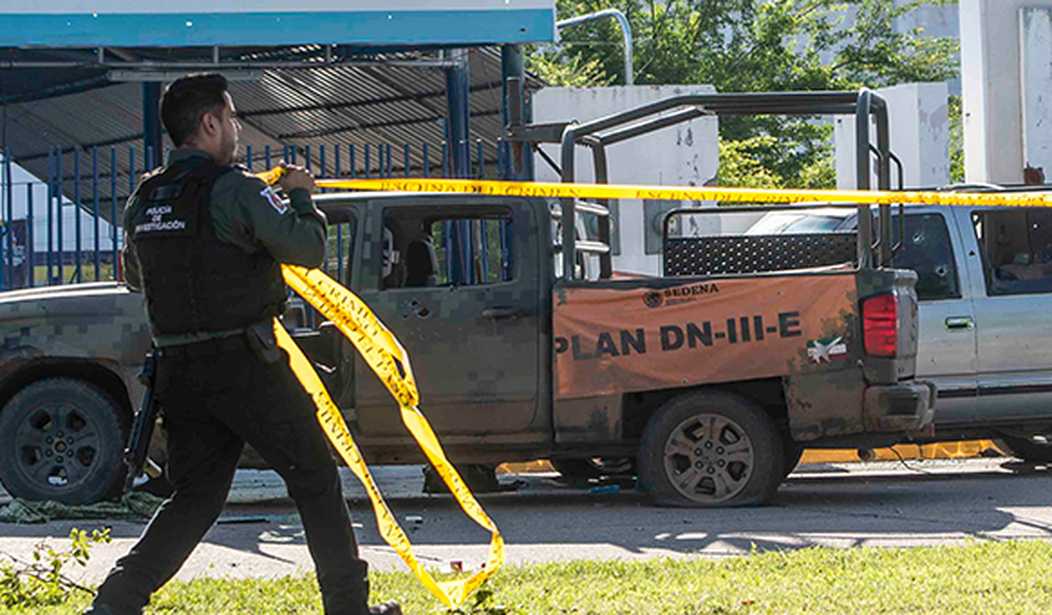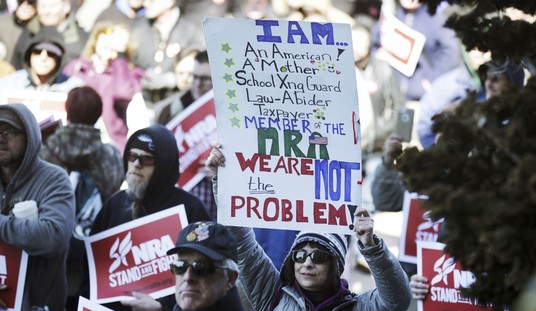After raging gun battles between members of the Sinaloa drug cartel and the Mexican military and police in the city of Culiacan last week, President Trump and Mexico’s president Andres Manuel Lopez Obrador agreed to work together to increase security at the border. Obrador wants to stop illegal firearms trafficking from the U.S. to Mexico, while Trump wants to stop the flow of illegal drugs coming from the Sinaloa cartels and other criminal organizations in Mexico. Are U.S. gun laws really to blame for the cartel violence in Mexico? The Los Angeles Times recently reported that Mexico’s homicide rate is at a record high, and “the U.S. provides the guns”, and the Washington Examiner pointed out after the violence in Culiacan that 70% of firearms seized and traced in Mexico have a U.S. origin.
“When we’re looking at specific calibers of weapons, and specific types of weapons, they overwhelmingly do come from the U.S. commercial market,” Scott Stewart, vice president of tactical analysis for geopolitical intelligence company Stratfor, told the Washington Examiner.
“This is an ongoing problem,” an official with the Bureau of Alcohol, Tobacco, Firearms and Explosives told the Washington Examiner. “It’s been with us for a while.”
Yet the Examiner notes that military machine guns, grenades, and even RPG’s were used by cartel members in Culiacan, and the last time I checked my local gun store, I couldn’t get any of those things. Is it really our gun laws arming the drug cartels, or corrupt officials within the Mexican military and police who are providing the military hardware to the criminal organizations?
Dr. John Lott with the Crime Prevention Research Center says the tracing information may show a large number of firearms coming from the United States, but those numbers don’t tell the whole story.
“…these figures are based only on the limited number of guns Mexican authorities have seized, traced, and submitted to the ATF for checking. That’s a small subset of guns. For instance, Mexico submitted 11,000 guns to the ATF in 2007-08, though it seized 29,000 guns during that time. Of those, 6,000 were successfully traced and 90% of those traceable weapons came from the U.S. Thus by one estimate only about 17.6% of the firearms Mexico collected in total could be traced back to America.”
Obviously the cartels are getting some of their weaponry from the U.S., but even if a firearm was traced back to an American origin., that doesn’t mean it was sold commercially and smuggled over the border. Many of the guns used by cartels in Mexico were originally (and legally) sold to Mexican police departments and even the military, but were diverted by corrupt officials in Mexico and delivered to the cartels.
While many of these weapons are officially destined for the Mexican armed forces and the country’s more than 1,600 federal, state and local police agencies, some of them fall into the hands of cartels and militia. In Mexico, military-style arms are frequently diverted and leaked from official arsenals. In some cases weapons are sent to the wrong customers altogether. For example, a recent high-profile case involved 9,000 firearms shipped illegally to Mexico by a German firm.
In other words, you could completely close off the southern border of the United States and the cartels would still possess the means to get ahold of all the weaponry they want. Beyond the diversion of legally sold guns to the cartels, the criminal syndicates are also using the international black market to arm themselves, as Dr. Lott pointed out.
“These kinds of guns- the auto versions of these guns- they are not coming from El Paso,” Ed Head, a firearms instructor who spent 24 years as a U.S. Border Patrol agent told Fox News. “They are coming in from other sources. They are brought in from Guatemala. They are brought in from places like China. They are being diverted from the military. But you don’t get these guns from the U.S.”
American gun control activists routinely blame the United States for the cartel violence in Mexico, and they do so in an attempt to make our gun control laws as restrictive as the gun laws already in place south of the border. In Mexico, there’s one single gun store for the entire country, and it’s located on a military base in Mexico City. Mexican citizens are theoretically allowed to own firearms under the country’s constitution, but in reality only 1% of Mexicans are legal gun owners, according to Lott. The country’s restrictive gun control laws hinder the average citizen, but are no impediment whatsoever to the cartels. As Lott points out, “strict gun control laws and high homicide rates often go together”, and that’s most certainly the case in Mexico, where legal gun ownership is almost non-existent and the homicide rate is about five times higher than the United States.
I wish President Obrador success in taking on the cartels, but in order to win that fight, he and other officials in Mexico are going to have to get serious about the real issue: the cartels themselves, not U.S. gun laws.









Join the conversation as a VIP Member